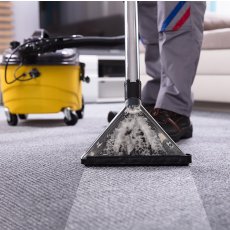How to Give Yourself a Subcutaneous Injection
Subcutaneous injections are commonly required for hormonal fertility drugs.
Subcutaneous means just below the skin, into the fatty tissue that lies between your skin and the muscle underneath.
You may need to give yourself injections of fertility drugs if you are:
Being treated with gonadotropins
Going through IVF treatment
Having IUI treatment
Giving yourself a subcutaneous injection is easier than you may think. The first couple of times you may be nervous. But before you know it, you'll feel like a pro.
You may have some medications that are given subcutaneously (for example, Gonal-F, Follistim, Lupron, and Ovidrel) and others that are intramuscular (like progesterone in oil).
The instructions below are only for subcutaneous injection.
What You Need Before You Start
A clean, dry surface to work on
Alcohol swabs
Clean hands
Gauze
Needles or syringes
Your medication
How to Give Yourself the Injection
Gather everything you need before you start on a clean, flat surface. If you want, you can use an alcohol swab to wipe the surface you'll be working on.
Locate your medication vials and/or syringe (some medications come in a pre-filled syringe, others you need to mix), the needle for mixing the medication, the needle for administering the shot, alcohol swabs, and a bit of gauze.
Wash your hands thoroughly to prevent infection.
Follow the mixing instructions given to you by your doctor or nurse if your medication requires mixing.
Draw the dosage prescribed by your doctor into the syringe. Usually, the needle you'll use for mixing the medication and drawing it into the syringe is different from the needle used for injecting yourself. (A larger needle can be used to mix the medications, so the mixing goes quickly.)
Place the needle for injection on the syringe once your medication is mixed. Remove the cap cover from the needle. If your syringe is pre-filled with a pre-attached needle, you'll just need to remove the cover of the needle.
Hold the syringe upright, the needlepoint up. Gently tap on the side of the syringe to help disperse any large air bubbles (you don't need to stress over tiny bubbles—it's not dangerous for them to be injected into fatty tissue).
Plunge the syringe until a small drop of medication appears at the tip of the needle. You may want to put the needle cap back on until you're ready to inject it.
Be careful not to let the needle tip touch any surface.
Choose your injection site. Your nurse or doctor will tell you where they want you to inject, but the most common site is around and just below the belly button.
Be sure you're at least 1 inch away from the belly button itself. (Most medication information sheets include an illustration of where the best place for injection is. Take a look if you're unsure.) You should inject in a slightly different spot each time to avoid skin irritation. You also shouldn't do the injection where there is a scar or bump.
Numb the area with an ice cube if you're concerned about the pain. (Most say this kind of injection isn't painful, more like a quick poke. You probably won't need to numb it.)
Wipe the area with an alcohol swab and let air dry. If you don't let it dry, the alcohol will give you a little sting when you do the injection. However, don't blow or wave your hand to make the alcohol dry quicker. That'll just reintroduce germs into the area.
Double-check that you've measured out the correct dose. Then, remove the cap from the needle, if you had put it back on after tapping out the bubbles. At your chosen injection site, pinch up about an inch worth of the skin. This helps move the fatty tissue up away from the muscle (which we don't want to hit).
Take the needle in your other hand, holding the syringe like a dart. You might want to take a few deep breaths. Then, on an exhale, gently but firmly push the needle through the skin at an upward 90-degree, or, if you're very thin, a 45-degree angle. Once the full length of the needle is in, you can let go of the pinched skin.
Depress the syringe until all the medication is administered. Don't feel like you need to rush, take your time.
Remove the needle carefully once you've injected all the medication and cover the injection site with a gauze pad. You may want to hold the gauze pad against your skin and just next to the needle before you pull the needle out, to prevent the skin from getting pulled up as you remove the needle (which can be uncomfortable).
Use a bandage if there is bleeding but usually, the injection site won't bleed. If you've accidentally nicked a blood vessel, a little bleeding is normal. It should stop soon.
Dispose of the needle or syringe in a puncture-proof container. Your pharmacy may have provided you with a special needle container. If not, any puncture-proof container can work. An empty plastic milk carton, an empty coffee can, or any other kind of similar container works fine.
Put whatever remaining medication vials you have back in the refrigerator (if that is where they are stored) until next time. You're done!
Tips on Injections
If you're nervous about giving yourself injections at home, that's OK.
Here are some tips that can help you feel more prepared:
Ask the staff at your doctor's office or fertility clinic to show to do the first injection. You can also ask about local and online resources that provide education about giving at-home injections. Additionally, medication manufacturers often provide how-to videos on their websites.
Ask your partner or a friend to help you perform the injection yourself. If you don't have someone to help at home, your fertility clinic might let you come in for the injection. However, it often has a small fee attached and unless you live close by, it might not be practical to go in for daily injections.
Expect some mild bruising and redness to appear near your injection sites, especially if you nick a blood vessel. You can reduce the irritation by avoiding that area for your next injection.
Don't rush, remember to breathe, and keep in mind that the first time is usually the hardest because you don't know what to expect. You'll get more confident each time you perform an injection and after a while, it won't feel as intimidating.








 Vectora Design
Vectora Design